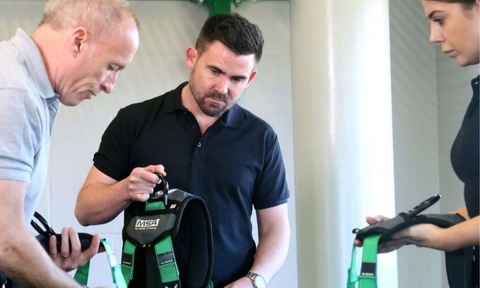Equipment counts for fall safety protection but so does training
11 Dec 2019

When working at height, quality training is every bit as important as providing suitable fall protection equipment, urges HCL’s Roger Boulter.
Almost all falls from height can be prevented, but they still remain the leading cause of workplace fatalities.
A fall of 3.05 m (10 ft.) takes only 0.8 seconds. There’s virtually no time to react. The velocity reached on impact with the ground is 7.74m/s (17.3 mph).
The most recent Health and Safety Executive (HSE) statistics show that in 2017 alone, falls accounted for 35 (28%) of all UK fatalities in the workplace.
Fatalities are only part of the picture. Falls from height also contributed to 43,000 non-fatal accidents. Over 60% of deaths when working at height involve falls from ladders, scaffolds, working platforms and roof edges and through fragile roofs.
It goes without saying that both competency and safety awareness are inextricably linked to these figures.
Under health and safety legislation (Health & Safety at Work Act 1974) employers have a duty to provide suitable and sufficient information, instruction and training for their employees. Users of fall protection equipment who are well-trained and confident will be far less likely to inadvertently place themselves, or their colleagues, at risk.
Since 2005, mandatory working at height regulations (including BS 8437:2005 and BS 8454:2006) have set out clear protocols for organisations to help ensure competency when working at height.
The more prepared users are to deal with a potentially dangerous environment, the less likely they are to make poor judgements
The standards cover provisioning appropriate best-practice training, keeping a register, user assessment and evaluation. It is no coincidence that, in the event of an investigation following any accident, the first documents to be scrutinised will be the record of competency training, and the risk assessments in place.
Confidently safer
The more prepared users are to deal with a potentially dangerous environment, the less likely they are to make poor judgements and increase the likelihood of injury. Just as manufacturers have clear expectations about how their systems should be used and maintained over time, employers have a responsibility to ensure operatives have the necessary safety awareness and training to use systems correctly.
But quality training isn’t just about using the system; it must also cover safety awareness in the widest sense. As well as exploring the theory and practice behind safely working at height, training should also highlight the applicable legislation and the legal ramifications of non-compliance.
The best training puts both safety and fall protection in context and focuses on small groups of people at a time - giving the opportunity to share learnings and get a full experience. Ultimately, a classroom session followed by practical training is what will give the best results.
Wider benefits
The benefits of adopting a rigorous approach quickly permeate across the workforce. Employees who are properly trained and prepared to apply the appropriate control measures to safe working at height are more likely to be engaged, diligent, efficient and ultimately loyal to their employer.
If operatives feel at risk on a roof, they will inevitably become more stressed. By provisioning detailed training that equips workers with the skills and knowledge to deal confidently with any situation, companies can improve workforce wellbeing and build esprit de corps.
The confidence has a further benefit. Operatives become empowered to raise potential issues they encounter and propose solutions to improve safety and working practices on-site.
By choosing quality training to deliver a good competency level, operatives become aware of their own limitations and can avert situations that may place themselves or their colleagues at risk.
Roger Boulter is training manager for HCL

